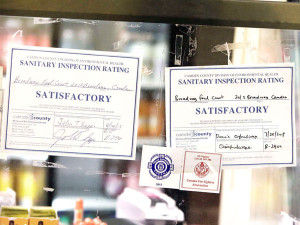According to an editorial in the Philadelphia Inquirer, much about restaurants is a matter of taste, but we can all agree on minimizing the involvement of rodents and bacteria. Fortunately, a cadre of city food-safety inspectors stands between Philadelphia’s diners and its noroviruses. Unfortunately, their work is about as difficult to trace as a case of food poisoning.
 It’s not just that the city’s restaurant inspection reports are tucked away in an obscure corner of the Web, but also that any layman who takes the trouble to find them will be hard-pressed to understand their meaning and import. How many violations are too many? Which conditions are cause for the most concern? The Department of Public Health’s six-page explanation and annotation of its standard “Food Facility Inspection Report” will defeat all but the most curious and patient consumers.
It’s not just that the city’s restaurant inspection reports are tucked away in an obscure corner of the Web, but also that any layman who takes the trouble to find them will be hard-pressed to understand their meaning and import. How many violations are too many? Which conditions are cause for the most concern? The Department of Public Health’s six-page explanation and annotation of its standard “Food Facility Inspection Report” will defeat all but the most curious and patient consumers.
It makes for a stark contrast with the letter grades that restaurants in New York and Los Angeles have to display prominently. Although New Jersey’s rules are less robust, its restaurants must post notice of whether their most recent inspections were “satisfactory.” Philadelphia mandates nothing of the kind.
Into this breach comes a searchable database compiled by The Inquirer and Philly.com and unveiled this week at philly.com/cleanplates. With nearly 70,000 inspection reports spanning the past five years, the database encompasses 12,000 restaurants and other institutions, from stadiums to schools. It also groups them by notable restaurateur (Stephen Starr, Jose Garces) and location (Reading Terminal Market, the airport). And it helpfully highlights the more serious and repeat violations, along with neighborhood averages for comparison.
Besides making food-safety findings more transparent, the database – like a separate effort by City Paper and AxisPhilly that debuted last month – showcases the work of about 35 so-called sanitarians and supervisors who handle the daunting task of inspecting 5,000 restaurants and 7,000 other kinds of kitchens. They have made substantial progress in increasing the frequency of inspections to at least yearly for most establishments, while honing their focus on the conditions most likely to cause food-borne illnesses.
But the reports also reveal that repeat violators present one of the greatest challenges to the city. That may be because the inspectors prefer a collaborative approach that works well for most establishments but fails when eateries lack the will or ability to address persistent problems. Health officials don’t have the power to impose major penalties, so they rely on other departments and the courts to take action in the most recalcitrant cases, with uneven results.
Greater transparency would be a relatively easy and inexpensive remedy. Given the restaurant industry’s importance to Philadelphia, it’s puzzling that the city has done so little to help consumers reward good practices. From a simplified rating system to mandatory public notices, the city has a range of options for appealing to the public appetite for food safety.
